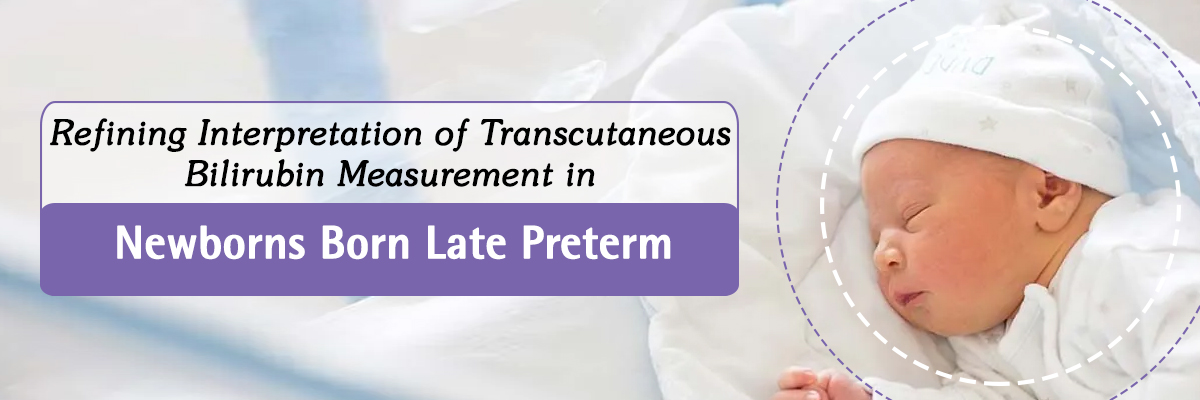
 IJCP Editorial Team
IJCP Editorial Team
Refining interpretation of transcutaneous bilirubin measurement in newborns born late preterm
Jaundice screening in the newborn period is mostly done with Transcutaneous bilirubin (TCB) monitoring. However, there are very less data on adjusting TCB for bias in late preterm infants.
A recent study determined the median bias between transcutaneous bilirubin and total serum bilirubin levels in newborns born at 35–36 weeks’ gestation.
The study included late preterm infants born at 35–0/7 to 36–6/7 weeks’ gestation and admitted to a Level III neonatal intensive care unit. The infants were assessed for Transcutaneous and total serum bilirubin levels within 2 h of each other during the first 60 hours of life. Bland–Altman plots were employed to evaluate transcutaneous bilirubin bias. Bilirubin risk stratification based on age (in hours) was carried out using an adaptation of the Bhutani nomogram for transcutaneous, adjusted transcutaneous, and total serum bilirubin measurements.
The results were as follows-
- The median bias between transcutaneous and total serum bilirubin bias was found to be 2.4 mg/dL.
- The kappa statistic showed-
- Slight agreement between the unadjusted transcutaneous bilirubin and total serum bilirubin;
- A fair agreement between adjusted transcutaneous bilirubin (subtract 1 mg/dL) and total serum bilirubin;
- Moderate agreement between another adjusted transcutaneous bilirubin (subtract 2 mg/dL) and total serum bilirubin.
Thus, in late preterm infants, transcutaneous bilirubin systematically overestimates the total serum bilirubin level. Subtracting 1 mg/dL from the transcutaneous bilirubin can identify infants with total serum bilirubin levels in the high or high intermediate risk range.
Adjusting the transcutaneous bilirubin before risk stratification may lessen unnecessary blood draws for total serum bilirubin.
Further, studies of racially and ethnically diverse newborns using various transcutaneous bilirubin meters are warranted before broad application of the adjusted transcutaneous bilirubin approach.
Akuamoah-Boateng G,Stetson RC,Karon BS, Brumbaugh JE. Refining interpretation of transcutaneous bilirubin measurement in newborns born late preterm. Pediatrics and Neonatology. 2022. DOI:https://doi.org/10.1016/j.pedneo.2022.05.003

IJCP Editorial Team
Comprising seasoned professionals and experts from the medical field, the IJCP editorial team is dedicated to delivering timely and accurate content and thriving to provide attention-grabbing information for the readers. What sets them apart are their diverse expertise, spanning academia, research, and clinical practice, and their dedication to upholding the highest standards of quality and integrity. With a wealth of experience and a commitment to excellence, the IJCP editorial team strives to provide valuable perspectives, the latest trends, and in-depth analyses across various medical domains, all in a way that keeps you interested and engaged.




















Please login to comment on this article